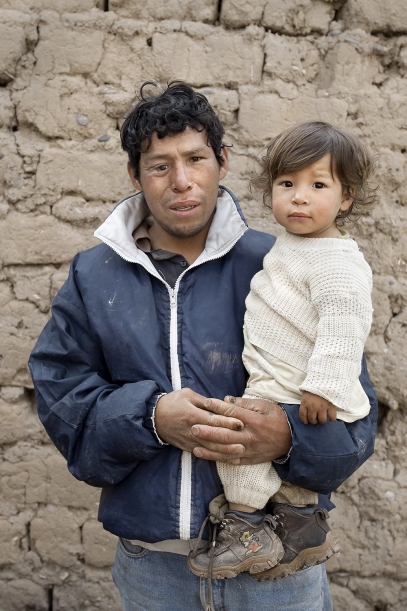
Step by Step
Stephen Petegorsky | Nicaragua
Photographer: Stephen Petegorsky
Exhibit Title: Step by Step
Location: Nicaragua
Since 1998 I have photographed the work of the Polus Center for Social and Economic Development, a human services organization whose international projects assist people with disabilities and victims of conflict.
Their first efforts led to the opening of a prosthetics clinic in Nicaragua. That country’s revolution and civil war left 30,000 people dead and countless more injured. Crushing poverty compounds the difficult circumstances already faced by people with disabilities.
Losing a limb often means losing the ability to earn a living, to get an education, to acquire job skills. Receiving a prosthetic limb or a wheelchair is of life-saving significance to individuals, their families, and their communities. It can determine whether someone can rebuild their life and become self-reliant, or instead will remain dependent and indigent.
Many countries are still plagued by land mines, unexploded ordnance, and explosive remnants of war. I have traveled to Nicaragua, Honduras, Peru, Colombia, Ethiopia, Rwanda, the Democratic Republic of Congo, Jordan, and Tajikistan, documenting the efforts to improve lives.
In the mountains of rural Peru, three boys hope to gather grass to feed their animals or wood to burn for cooking. They slip through a barbed wire fence surrounding an electrical tower and find a box. As they started to examine it, the box – a device deployed by the National Police to discourage guerrillas from sabotaging the electrical grid – explodes. One of the boys is blinded and two are maimed. A few years later, the young man who lost his sight receives a knitting machine specially made for the blind. With it, he is able to make parts of sweaters that his parents assemble so that they can sell the finished clothing.
In northern Nicaragua, a man goes to work harvesting coffee beans even though he knows that the fields might contain land mines placed there years earlier during the country’s civil war. He steps on one, and the explosion destroys his left leg. He is eventually able to get a prosthesis, which allows him to walk and to work so that he can once again support himself and his family.
These victims of conflict, who might otherwise languish in poverty, have had the quality of their lives greatly enhanced by relatively simple and inexpensive interventions.
I have photographed the work of the Polus Center for Social and Economic Development, a small human services agency, for many years as they designed and implemented projects to assist people with disabilities.
The group’s first international project led to the creation of a prosthetics clinic in Nicaragua. Two years later another clinic was established in Honduras. Those successes led to grants for other work, and over the years the Polus Center has gained recognition for its expertise in creating effective victim-assistance programs. While the early work served people whose disabilities stemmed from a variety of causes, their work in recent years has primarily focused on victims of conflict.
The Polus Center’s approach involves gathering information directly from people with disabilities through open-ended interviews in their native language, always partnering with people or groups in the particular country in which the work will be done. The interviews are conducted by small teams, usually in homes, clinics, and places of work. This allows me to photograph in intimate settings, in which trust has been established through the process of listening to people talk in detail about their lives, their injuries and losses, the difficulties they face, and the hopes they may have. In these moments, I have found the subjects to be especially open, honest, and vulnerable.
Victims of conflict in developing countries or poor regions often have no safety net. They do not have access to insurance settlements for their injuries; they cannot afford lawyers to represent them in personal injury cases; they will not have the option of a desk job. In most instances, the only work available that would allow them to make even a modest living is physical in nature. If they have become disabled, they and their families will have a hard time surviving. Getting a prosthetic, a wheelchair, or other assistance will likely be a life-changing event.
As Americans we are not commonly exposed to non-military victims of conflict. Though the events of 9/11 and other acts of terror in the United States have begun to change that, it is still difficult for most Americans to know what life is like for such people who live in very poor countries and regions. I have never been a photojournalist, and I do not feel the need to make pictures that evoke pity or that try to tell a story in a single image. Rather, I hope as an artist to create a series of images that portray victims of conflict with compassion and dignity, that call attention to the fact that innocent people around the world continue to be injured by land mines and explosive remnants of war, and that illustrate how it is neither costly nor difficult to help them rebuild their bodies and their lives.
The Polus Center for Social and Economic Development
Make Comment/View Comments